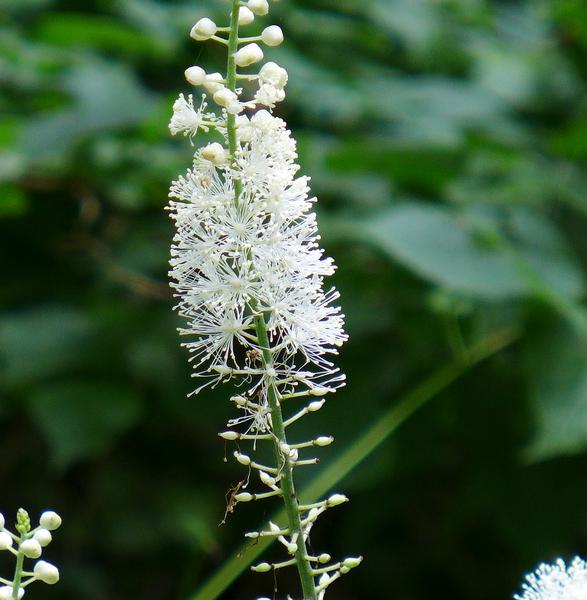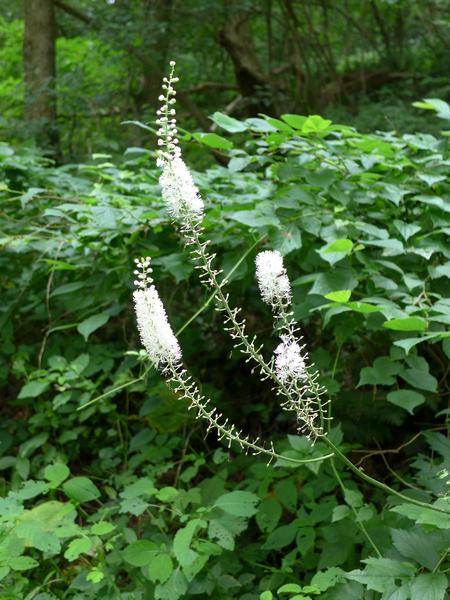
In July you’ll see white “fairy candles” blooming in the woods. They’re the flowers of black cohosh, raising their spindly stems toward the light.

These “fairy candles” are also called “black snakeroot” because the root is black. Native Americans used the root to treat pre-menstrual symptoms, an herbal treatment that’s still in use today.
Black cohosh (Actaea racemosa, syn. Cimicifuga racemosa) looks a lot like mountain bugbane (also known as American bugbane, Actaea podocarpa) because the plants are related. Mountain bugbane is endangered in Illinois and rare in Pennsylvania. Get a whiff of the flowers to tell the diffrence: Mountain bugbane smells good, black cohosh smells bad.
Unfortunately some people dig up both plants thereby killing them and making them harder to find in the wild. Whether digging is legal depends on the rare/endangered status of the plant and who owns the land. It’s legally complicated but ethically simple: Removing shared beauty for private use leads to the Tragedy of the Commons.
p.s. U.S. Forest Service has a good article — here — about the legality and ethics of taking plants on Federal land.
(photos by Kate St. John)